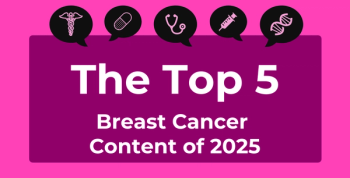
The American Journal of Managed Care
- July 2012
- Volume 18
- Issue 7
Role of Pharmaceuticals in Value-Based Healthcare: A Framework for Success
Key Takeaways
- Value-based healthcare aims to improve patient access to medications, reduce costs, and meet quality benchmarks through an integrated approach.
- Success requires managing both economic and quality elements, with a focus on condition-specific and cross-condition medication management.
A framework for the role of pharmaceuticals in value-based healthcare, practical examples from organizations that have made the transition, and implementation considerations.
Provider organizations shifting from a fee-for-service world toward a value-based one face a challenging transition. If done correctly, value-based healthcare can enable patients to gain access to and support in using needed medications while simultaneously lowering cost growth and achieving the quality benchmarks that the marketplace will demand. This article provides:
- A framework for exploring the role of pharmaceuticals in this value-based transition.
- Some examples of how the challenge is being navigated in the real world.
- Some implementation considerations.
To achieve the triple aim of better care for individuals, improved health for populations, and slower cost growth, our healthcare system will likely evolve from volume-based (quantity) to value-based (quality and cost) purchasing. Already, both the public and private sectors are moving in this direction. On the public side, the Centers for Medicare & Medicaid Services (CMS) recently published results from the Physician Group Practice (PGP) demonstration project, achieving strong quality metrics along with mixed results on cost savings. Seven of the 10 organizations met all 32 quality benchmarks at year 5 (the remaining 3 organizations met at least 30), a significant increase from the initial year when only 2 organizations achieved all 32.1 While the program achieved an impressive $36.2 million in Medicare savings during year 5, half of these savings were earned by the Marshfield Clinic, with the remainder earned by 4 other participants.2 On the private side, there are many ongoing activities, such as the Blue Cross Blue Shield of Massachusetts Alternative Quality Contract, which demonstrated a slowing of spending growth and improved quality of care in the first year of the program.3
In contrast to the capitation methods of the 1990s, success in a value-based environment will depend upon providers managing both economic and quality elements. Established by CMS, the Medicare Shared Savings Program for accountable care organizations (ACOs)4 includes both a shared savings component and receipt of payments for achieving quality benchmarks. In an environment where only costs are considered, medications are viewed narrowly as a siloed expense item and medication management efforts traditionally focus on medication selection and their associated cost. In a value-based environment, an integrated approach to medications is critical. Without this integration, it is difficult to calculate and recognize the cost offsets and quality benefits that can occur from optimized pharmaceutical use.
To begin this dialogue, our working group developed a conceptual framework for the role of pharmaceuticals in value-based health care. The working group consisted of 7provider organizations (Baystate Health, Billings Clinic, Fairview Health Services, Geisinger Health System, Marshfield Clinic, Sharp HealthCare, and University of Utah Health Care), Premier (an alliance of hospitals and health systems), the American Medical Group Association (an association of multispecialty medical groups), and the National Pharmaceutical Council (a non-advocacy policy research group supported by the pharmaceutical industry). The working groupencompassed a breadth of value-based knowledge, including experience in the PGP demonstrations, current ACO contracts, and potential participation in the CMS ACO or Pioneer pilot programs. We hope our efforts will be considered by provider organizations and those who set expectations for them, such as payers and patients.
Table
The framework begins with a condition-level set of questions designed to elucidate the role of medications in the achievement of both quality and cost goals (see ):
1. Is the condition chronic in nature, or is it an acute hospital-based condition?
2. Are there quality measures relating to this condition that are likely to be impacted by pharmaceutical use, and are these quality measures being requested by payers?
3. How large a role do pharmaceuticals play in the cost of treating the condition? What is their share of the overall cost, and to what extent are medical cost offsets possible from appropriate pharmaceutical use?
As the table demonstrates, the economic and quality impact of medications varies by condition. Although congestive heart failure (CHF) may have acute exacerbations, it is chronic in nature and the emphasis of pharmaceutical management is on the outpatient setting. Proposed CMS ACO quality measures for CHF directly involve pharmaceuticals; ie, beta-blocker therapy for left ventricular systolic dysfunction. Pharmaceutical use will also play an important role in preventing hospital readmissions, influencing a common outcome measure. On the financial side, pharmaceuticals are a small component of overall cost, approximately $440 per patient per year.5 However, they have a tremendous potential to contribute to cost offsets through their role in preventing hospitalizations, a cost on average of $7100 to $8400 (with potential to be much higher).6 In the Medicare program alone, CHF led to nearly 1.4 million hospitalizations and $17 billion in spending in 2007.6 A focus on outpatient medical management and the prevention of hospitalizations rather than the acute CHF exacerbations can thus lead to lower costs and higher quality.
In contrast, for rheumatoid arthritis (RA), pharmaceuticals represent a large share of the treatment costs, and it is not yet known what potential there may be for medical cost offsets. There are quality measures relating to the use of RA medications and their impact on functional status, but these measures are not part of value-based programs. As an example, the proposed CMS ACO rules have no quality measures for RA or other important chronic conditions where medications have a central role (eg, multiple sclerosis, breast/lung/colon/prostate cancer). This scenario where there are possible economic incentives but no quality measures may not be in the patients’ best interest. There could be pressure to reduce spending on pharmaceuticals with no countervailing quality assessment to detect underuse.
Beyond condition-level considerations, success in a value-based environment will depend upon understanding and optimally managing medications across conditions and populations. To do so, patients may be stratified by overall risk (eg, low, medium, or high risk) based upon the number and severity of each patient’s conditions. Even patients at low risk (eg, those with no current illness or those not on medications) would be candidates for assessment. These patients may benefit from vaccines, which are frequently included in quality measures and have the potential for cost offsets through the prevention of disease. Patients at high risk require close medical oversight, as these individuals are more likely to experience drug-drug-, drugdisease-, or polypharmacy-related complications. These patients would also benefit from medication reconciliation as part of their hospital discharge process. In addition to achieving better health outcomes, cost offsets may result from the prevention of these adverse events. This cross-condition view raises medication therapy management considerations not evident in a condition-specific perspective. Moving to proactive cross-condition medical management is far more likely to improve quality and reduce costs than acute care management.
The transition from the fee-for-service world toward a value-based one creates a complicated organizational and economic transition, one which we have begun to navigate. For example, Geisinger Health System has developed a portfolio of ProvenCare, both acute and chronic disease procedures/ processes of care to ensure that patients receive high quality treatment according to recognized benchmarks. This program carries with it a financial warranty—if a patient experiences an avoidable complication within 90 days of the procedure, the cost of follow-up care is provided by Geisinger and is covered in its entirety. Other key investments made by Geisinger include an electronic health record (EHR), a systemwide anticoagulation/ medication therapy management program, and a 24-7 telephone nurse hotline. Marshfield Clinic (the PGP participant responsible for half of the year 5 economic savings) credits several key areas for quality investment: a welldeveloped EHR, a 24/7 telephone nurse line for patient advice and triage, clinic programs for anticoagulation and CHF, a cholesterol management program, and a well-established telemedicine initiative. Finally, Fairview Health Services is introducing a revolutionary approach to primary care compensation. Under the new formula, half of the doctors’ income will be based on quality-of-care scores and patient satisfaction surveys. Although some of the preceding examples are not explicitly related to pharmaceuticals, they are germane to the framework as they provide the infrastructure for the pharmaceutical components to succeed.
Although the triple aim of value-based payment may be clear, the path to get there is not. For those making this important transition, we propose the following implementation considerations:
1. Proactively consider medications an essential part of the full spectrum of condition management, and not just an expense or care silo.
2. The role, impact, and characteristics of medication therapy management will vary by condition, and a “one size fits all” approach will not yield optimal clinical or economic outcomes.
3. Composite risk can be used to identify patients who are candidates for medication management strategies to watch for drug-drug, drug-disease, or polypharmacy concerns.
4. In each circumstance where there are conditionspecific incentives to achieve economic savings, there should also be a quality metric to detect underuse.
The evidence-supported pilot approaches to system redesign and condition/medication management as described above, along with others being pioneered elsewhere, deserve to be repeated.
If done correctly, value-based healthcare can enable patients to gain access to and support in using needed medications, while simultaneously lowering cost growth and achieving the quality benchmarks that the marketplace will soon demand. An integrated view of medications and overall care is necessary for the full realization of the potential offsets and benefits that medications can offer. This view can apply to any value-based environment—ACOs, consumer-directed health plans, or patient-centered medical homes. We hope this framework will be of use to provider organizations and their stakeholders as they navigate this new world.Acknowledgment
The Working Group on Optimizing Medication Therapy in Value-Based Healthcare: Amanda Brummel, PharmD (Fairview Health Services); F. Douglas Carr, MD (Billings Clinic); Julie Day, MD (University of Utah Health Care); Robert W. Dubois, MD, PhD (National Pharmaceutical Council); Michael Evans, RPh (Geisinger Health System); Marv Feldman, RPh, MS (Premier); Gary Kerr, PharmD (Baystate Health); John Martin, MPH (Premier); Gary Plank, PharmD (Marshfield Clinic); Albert Rizos, PharmD (Sharp HealthCare); Julie Sanderson-Austin, RN (American Medical Group Association); and Kimberly D. Westrich, MA (National Pharmaceutical Council).
Author Affiliations: From National Pharmaceutical Council (RWD, KDW), Washington DC; Premier Inc (MF, JM), Boston, MA; American Medical Group Association (JS-A), Alexandria, VA.
Author Disclosures: Dr Dubois and Ms Westrich report employment with the National Pharmaceutical Council, the funder of the study. The authors (MF, JM, JS-A) report no relationship or financial interest with any entity that would pose a conflict of interest with the subject matter of this article.
Authorship Information: Concept and design (RWD, MF, JM, JS-A, KDW); acquisition of data (RWD); analysis and interpretation of data (RWD, MF); drafting of the manuscript (RWD, JM, JS-A, KDW); critical revision of the manuscript for important intellectual content (RWD, MF, JM, JS-A, KDW); obtaining funding (RWD); and supervision (RWD).
Funding Source: National Pharmaceutical Council.
Address correspondence to: Robert W. Dubois, MD, PhD, 1501 M St, NW, Ste 650, Washington, DC 20005. E-mail: rdubois@npcnow.org.1. Physician Group Practice Demonstration succeeds in improving quality and reducing costs [press release]. Baltimore, MD: Centers for Medicare & Medicaid Services; August 8, 2011. https://www.cms.gov/apps/media/press/release.asp?Counter=4047. Accessed January 30, 2012.
2. Wilensky, GR. Lessons from the Physician Group Practice Demonstration—a sobering reflection. N Engl J Med. 2011;365(18):1659-1661.
3. Song Z, Safran DG, Landon BE, et al. Health care spending and quality in year 1 of the alternative quality contract. N Engl J Med. 2011;365(10): 909-918.
4. Berwick DM. Making good on ACOs’ promise—the final rule for the Medicare shared savings program. N Engl J Med. 2011;365(10): 1753-1756.
5. Sokol MC, McGuigan KA, Vergrugge RR, Epstein RS. Impact of medication adherence on hospitalization risk and healthcare cost. Med Care. 2005;43(6):521-530.
6. Joynt KE, Orav JE, Jha AK. The association between hospital volume and processes, outcomes, and costs of care for congestive heart failure. Ann Intern Med. 2011;154(2):94-102.
Articles in this issue
Newsletter
Stay ahead of policy, cost, and value—subscribe to AJMC for expert insights at the intersection of clinical care and health economics.









































